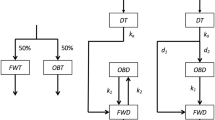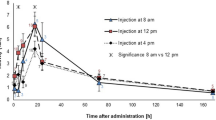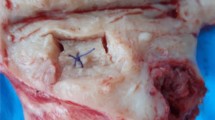Abstract
WE have examined the distribution in mice of the metabolic products of two œstrogens by an autoradiographic method which allows histological localization. It is of interest to use a ‘physiological’ dose, which Dodds1 estimates to be close to 1 µgm. hexœstrol in the rat. Glascock and Hoekstra2, using tritium-labelled hexœstrol in the goat and the sheep, found that the maximum quantity of the injected product which could be recovered did not at any time exceed 0.2 per cent in the uterus or 0.05 per cent in the vagina.
This is a preview of subscription content, access via your institution
Access options
Subscribe to this journal
Receive 51 print issues and online access
$199.00 per year
only $3.90 per issue
Buy this article
- Purchase on Springer Link
- Instant access to full article PDF
Prices may be subject to local taxes which are calculated during checkout
Similar content being viewed by others
References
Dodds, E. C., Folley, S. J., Glascock, R. F., and Lawson, W., Biochem. J., 68, 161 (1958).
Glascock, R. F., and Hoekstra, W. G., Biochem. J., 72, 673 (1959).
Ficq, A., Arch. Biol., 66, 509 (1955).
Budy, A. M., Arch. intern. Pharmacodynamie, 103, 435 (1955).
Rengler, I., Proc. Soc. Exp. Biol. Med., 95, 506 (1957).
Author information
Authors and Affiliations
Rights and permissions
About this article
Cite this article
PAEPE, J. An Autoradiographic Study of the Distribution in Mice of Œstrogens labelled with Carbon-14 and Tritium. Nature 185, 264–265 (1960). https://doi.org/10.1038/185264a0
Issue Date:
DOI: https://doi.org/10.1038/185264a0
This article is cited by
-
Radioautography of tritiated sex steroids in the rat
Histochemie (1970)
Comments
By submitting a comment you agree to abide by our Terms and Community Guidelines. If you find something abusive or that does not comply with our terms or guidelines please flag it as inappropriate.



